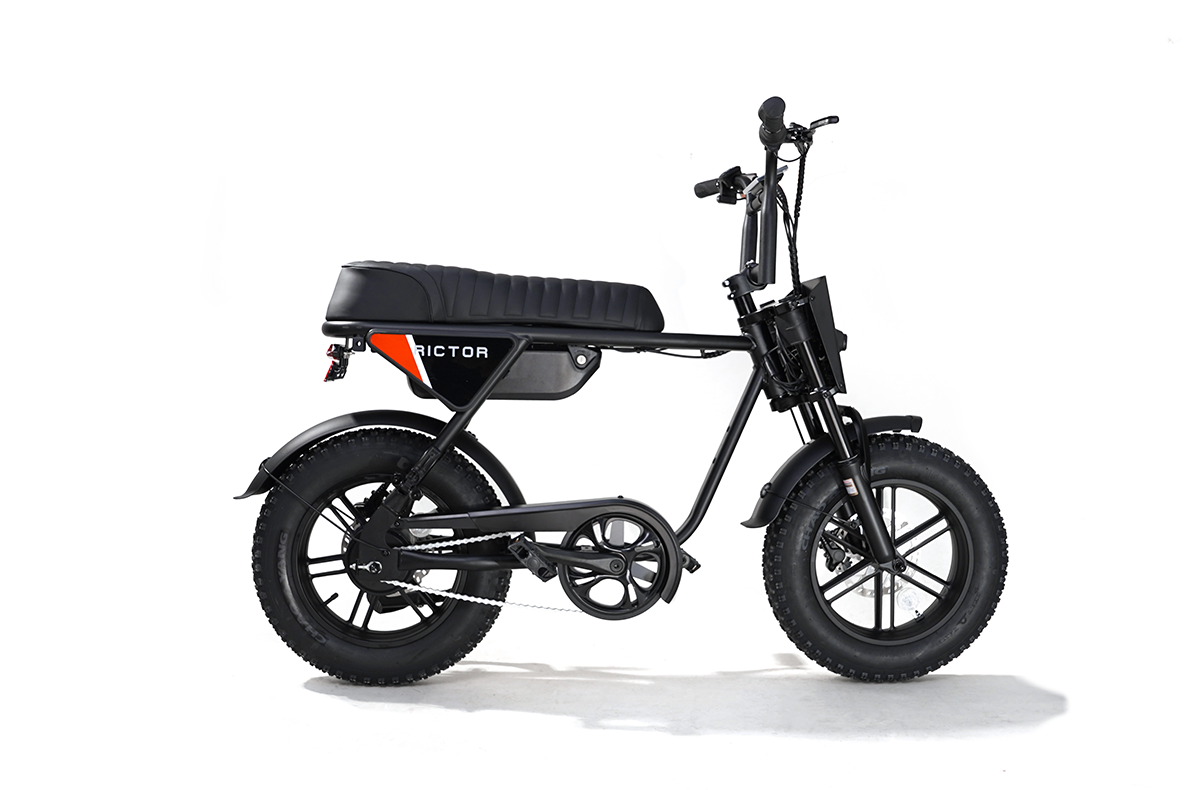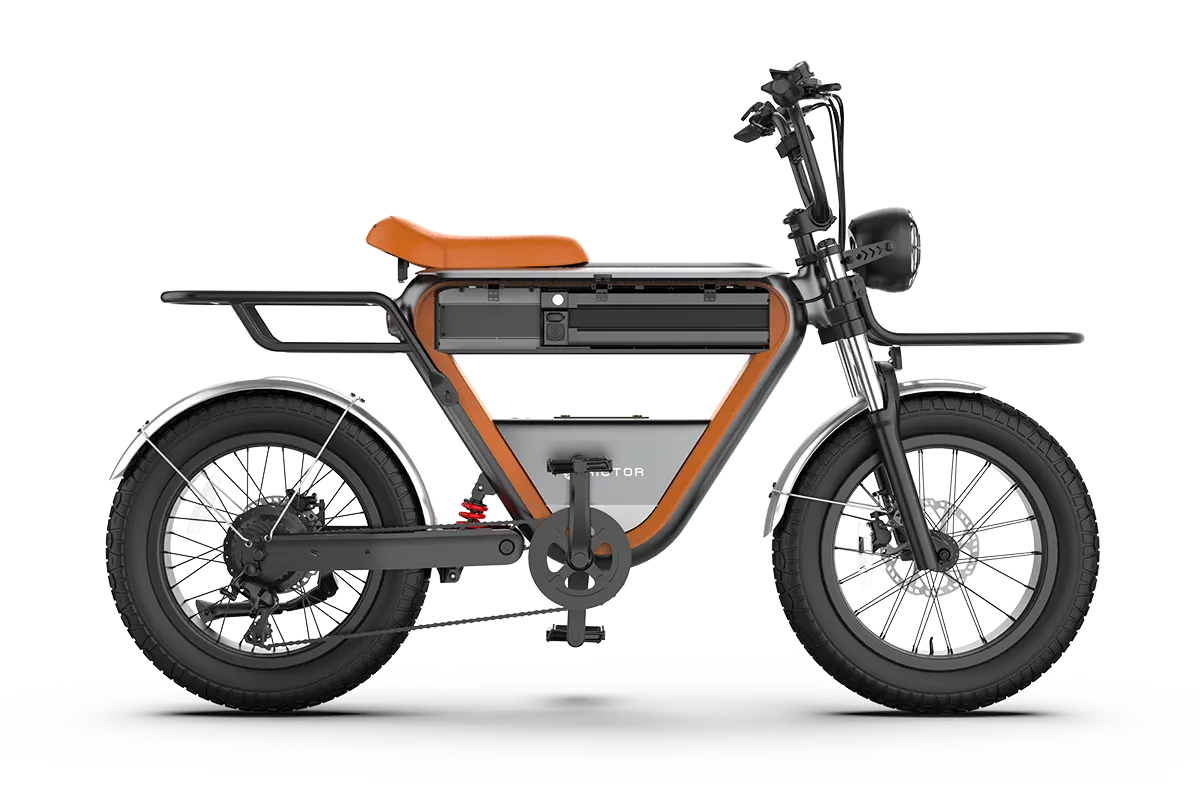
Beginner Guide | Class Of Classes Of Electric Bikes Explained
The e-bike industry, along with over half of the U.S. states, has come together around a simple yet broad system to categorize electric bikes—Class 1, Class 2, and Class 3.
This classification system, supported by PeopleForBikes, a major American trade association, helps bring clarity to riders and manufacturers alike.
In this blog, we’ll break down what each class means, so you can easily identify which type of e-bike is right for you.
What Exactly Are Electric Bike Classes
Electric bikes are grouped into three main classes based on their speed, motor assistance, and the specific laws that govern each type.
Class 1 Electric Bikes
A bike that’s all about giving you a gentle boost when you pedal.
That’s a Class 1 e-bike, where the motor kicks in only when you’re pedaling and stops helping you once you hit 20 mph.
You’ll typically find them allowed on most bike paths and city streets, thanks to their limited speed and pedal-assist-only design.
Class 2 Electric Bike
With Class 2 e-bikes, you get a throttle option.
That means you can sit back, press the throttle, and the motor will take you up to 20 mph without pedaling at all if you choose.
Class 2 is ideal for anyone who wants flexibility in their ride. Many areas allow Class 2 bikes on the same paths and roads as Class 1.
Class 3 Electric Bikes
Class 3 e-bikes are the way to go.
They offer pedal-assist up to 28 mph, but they typically don’t have a throttle.
If you’re all about speed, efficiency, and staying on the road, Class 3 is built with you in mind.
However, some restrictions apply—these aren’t always allowed on multi-use paths, so be sure to check your local laws before hitting the trails. Rictor K1 electric bike is a class 3 electric bike.

SEE ALSO What Speeds Can You Reach on an Electric Bike?
What Is A Class 4 Electric Bike
Is there a Class 4 electric bike? After all, with Class 1, 2, and 3 clearly defined, it seems only natural to ask if there’s a “next level” of electric bike out there.
Technically speaking, Class 4 electric bikes don’t exist—at least not in the official sense.
The current classification system in most countries only includes Classes 1, 2, and 3.
These categories were created to regulate where and how e-bikes can be ridden safely, setting clear speed and power limits.
Class 4, however, would fall outside these limits and typically involves bikes that go faster than 28 mph or have more powerful motors than 750 watts.
In essence, anything beyond Class 3 would likely be considered a “motor vehicle” rather than an e-bike.
That means it would be subject to different regulations, like licensing, insurance, and restrictions on where it can be ridden.
So, while there’s no official Class 4, bikes that push beyond the limits of Class 3 are out there—they’re just classified as something else entirely.

How to Tell What Class Your E-Bike Is
You don’t need to dig through manuals or search online. Instead, just take a look at your bike.
Does it have a throttle
-
Class 1: If your bike only has pedal assist and the motor cuts off at 20 mph, it’s a Class 1. No throttle here—just pedal power.
-
Class 2: If you see a throttle (like a small twist grip or a thumb lever), you’ve got a Class 2. This type lets you go up to 20 mph using the throttle without pedaling, but you can also use pedal assist if you want.
-
Class 3: If your bike only has pedal assist but can reach up to 28 mph, it’s a Class 3. There’s no throttle, just a stronger pedal assist system to help you go faster.
Check the motor power
-
Class 1 and Class 2: These bikes usually have motors between 250W and 750W, which is standard for most e-bikes in these classes.
-
Class 3: While the motor might be the same power range, these bikes are built for higher speeds, so their motor assists you more effectively in reaching 28 mph.
Look at the speed limit
-
Class 1 and Class 2: If your bike caps out at 20 mph, you’re looking at a Class 1 or Class 2.
-
Class 3: If you’re cruising at 28 mph, then you’ve got a Class 3.
Pedal Assist vs. Throttle
-
Class 1 and Class 3: Both these bikes use pedal assist, but Class 3 gives you a much stronger boost to hit that 28 mph. Class 1 is limited to 20 mph.
-
Class 2: If your bike has both throttle and pedal assist, it’s likely a Class 2.
FAQs
How long does the battery last on an electric bike?
The battery on an e-bike typically lasts between 3 to 5 years, depending on usage, care, and maintenance. Regular charging and storing it properly can extend its life.
Are electric bikes heavy?
Yes, e-bikes tend to be heavier than traditional bikes due to the motor and battery. On average, an e-bike can weigh between 35 to 70 pounds, depending on its components.
Can I ride an electric bike in the rain?
Yes, most electric bikes are designed to handle wet conditions. However, you should always check the manufacturer’s guidelines. Make sure to store your bike properly and avoid riding in extreme weather to preserve its components.




